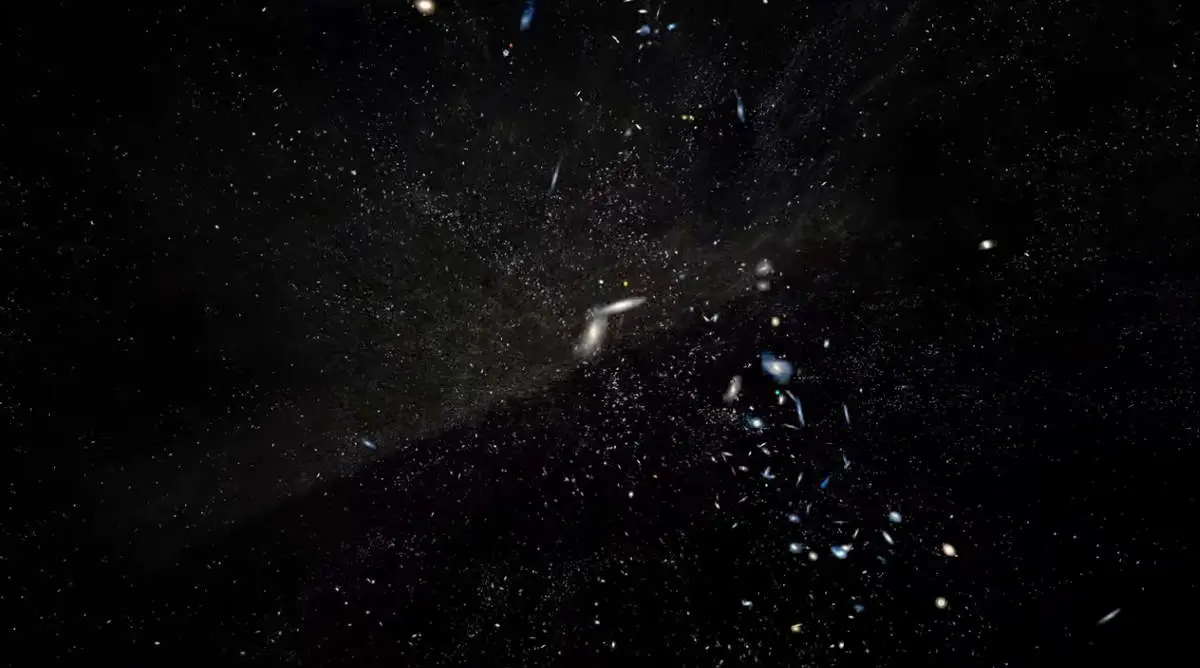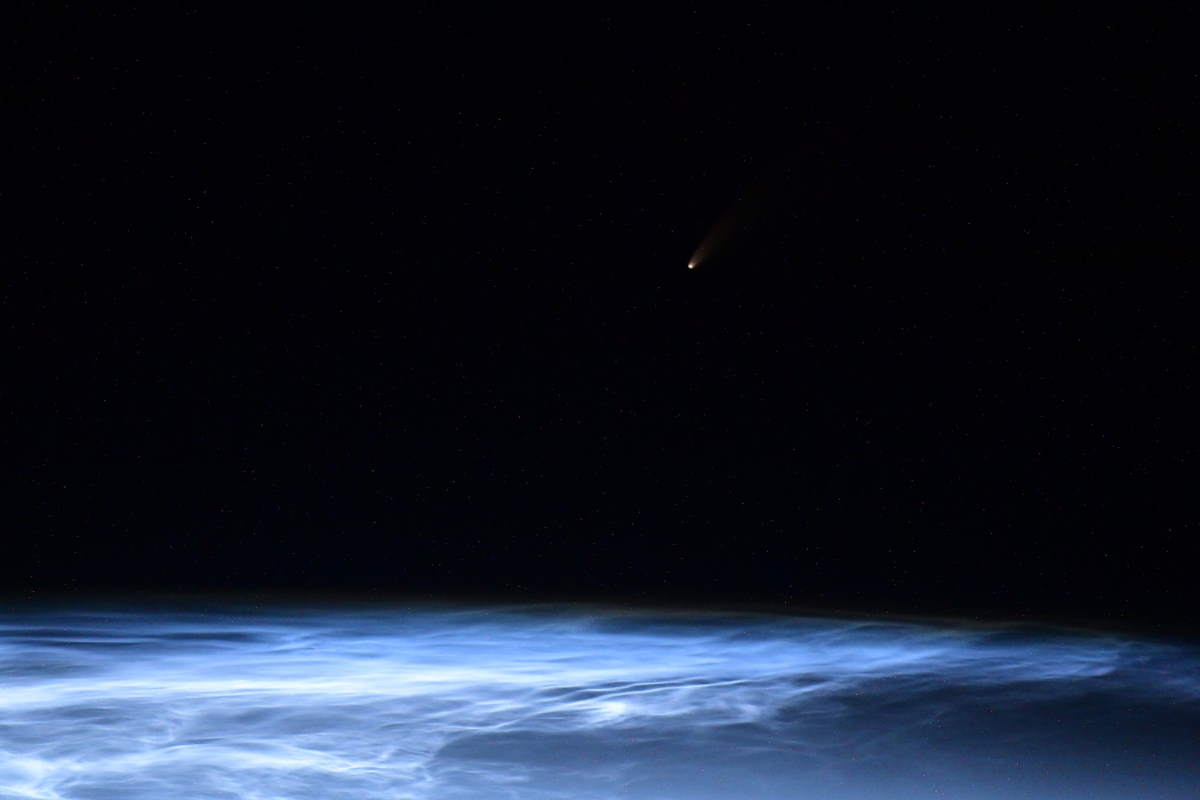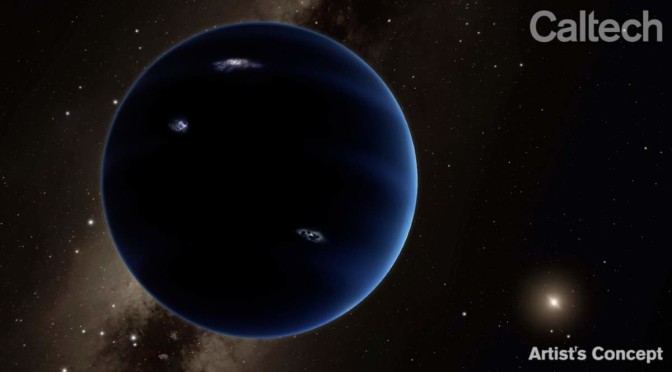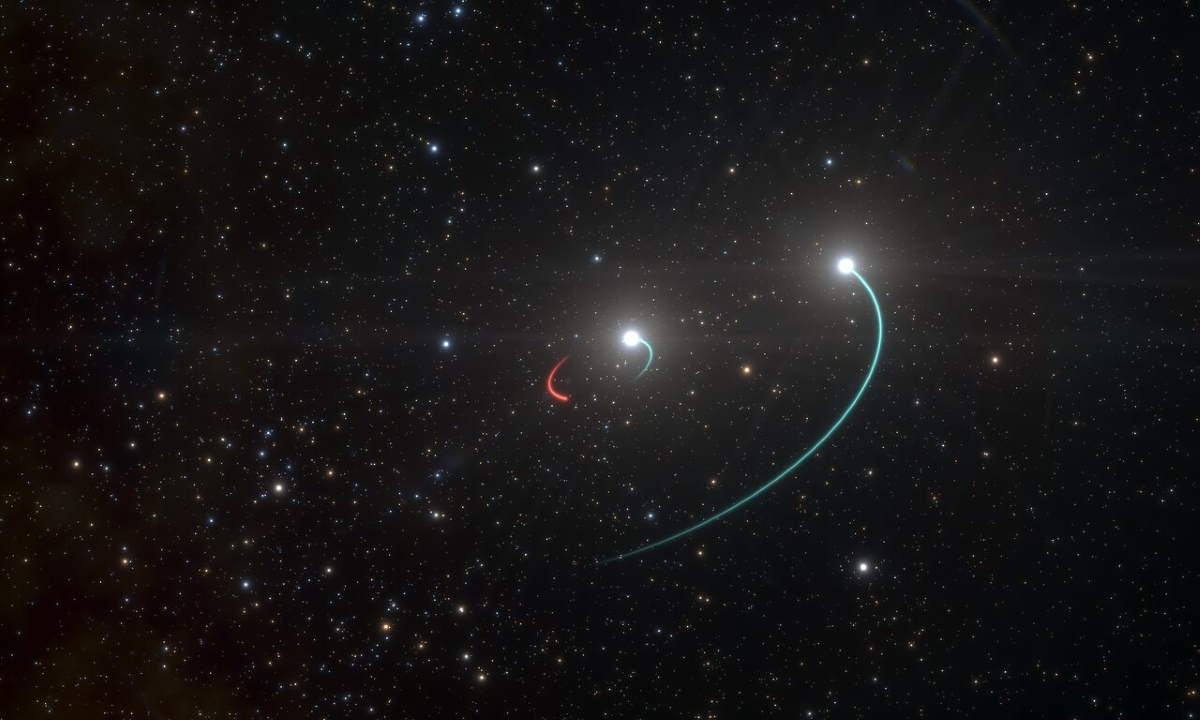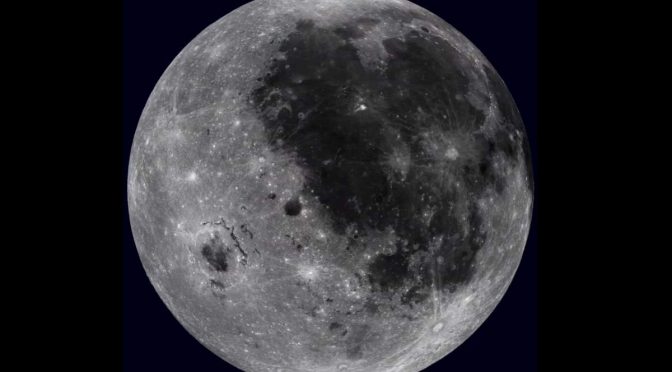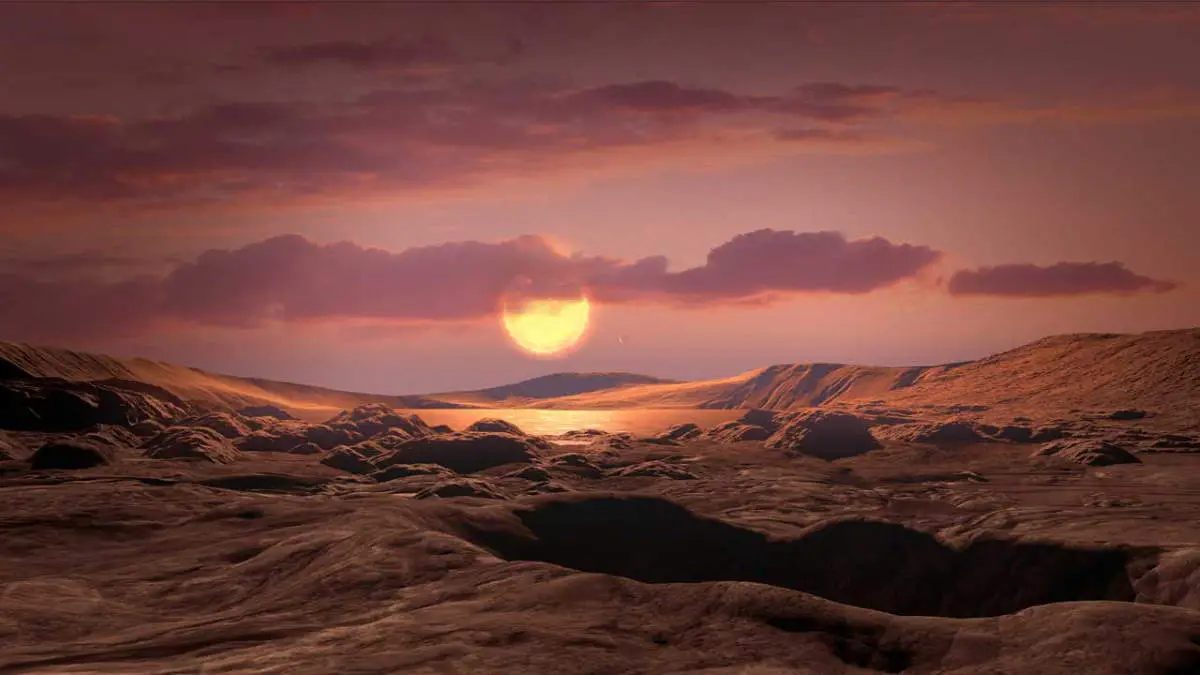On Jul 20, 2020, scientists have released what they call the “most-detailed 3D map of the universe ever produced”. This incredible map shows 11 billion years of the Universe’s history, with galaxies closest to Earth appearing in purple & blue, and distant galaxies in yellow & red.
Category Archives: Astronomy
Comet NEOWISE and noctilucent clouds – something we’ve never seen before
Russian space agency Roscosmos published spectacular photos of Comet NEOWISE (C/2020 F3) and noctilucent clouds or polar mesospheric clouds (PMCs) above our beautiful planet Earth. This is something we’ve never seen before (a comet and ).
Spectacular comet photo from the ISS
Russian cosmonaut Ivan Vagner published a spectacular comet photo on his Twitter account (@ivan_mks63). He tweeted both in Russian and in English and said “During the next revolution I tried to capture the C/2020 F3 (NEOWISE) comet a bit closer, the brightest one over the last 7 years. Its tail is quite clearly visible from …
How the moon was formed? An epic exploration of lunar origin theories
How the moon was formed? The most widely accepted theory of the Moon’s origin is known as the Giant Impact Hypothesis. The standard giant impact hypothesis, sometimes called the Big Splash, or the Theia Impact suggests the Mars-sized body, called Theia, impacted Earth, creating a large debris ring around Earth, and the Moon formed out …
Continue reading “How the moon was formed? An epic exploration of lunar origin theories”
Planet Nine might not exist, many astronomers now think
Planet Nine is a theoretical, undiscovered giant planet in the mysterious far reaches of our solar system. The presence of Planet Nine has been hypothesized to explain everything from the tilt of the sun’s spin axis to the apparent clustering in the orbits of small, icy asteroids beyond Neptune. But does Planet Nine actually exist? …
Continue reading “Planet Nine might not exist, many astronomers now think”
The closest black hole that you can see it even with “naked eye” has been discovered
Well, of course, you cannot see a black hole – but the newly discovered one has two stars orbiting it, and you can see these companion stars even with the naked eye from Earth. The triple system is named HR 6819. Named QV Tel Ab, the inner component of the system is the closest black …
You can explore Moon using this awesome map
This awesome map, using imagery taken by NASA’s Lunar Reconnaissance Orbiter (LRO), enables us to explore Moon within our browsers.
The Sun is less active than sibling stars, study shows – here’s what that could mean
All stars emit varying amounts of light over time – and the Sun is no exception. Such changes in starlight can help us understand how habitable any planets around other stars are – a very active star may bombard its planets with harmful radiation. Now a new study, published in Science, shows that the Sun …
A new Earth-sized planet (Kepler-1649c) in the habitable zone has been detected
A new Earth-sized planet named Kepler-1649c orbiting its star in the habitable zone has been detected by a team of scientists, using reanalyzed data from NASA’s Kepler space telescope, NASA has announced.
Moon looks like Saturn in this amazing photo
Amateur astrophotographer Francisco Sojuel took an amazing photo of our satellite: because of the clouds, the Moon looks like Saturn – as if it is attempting to impersonate the ringed planet.
